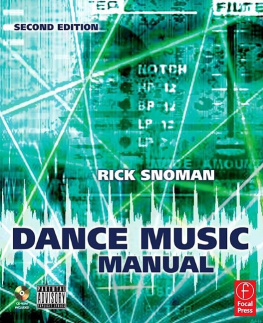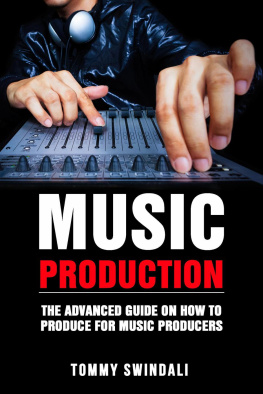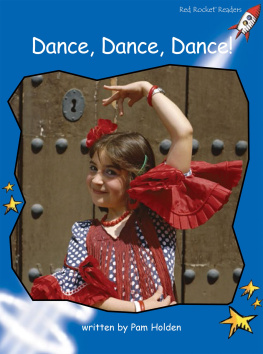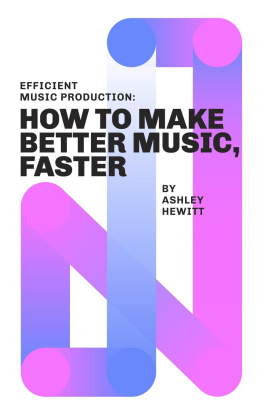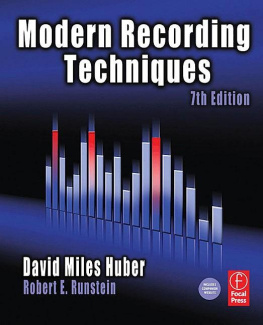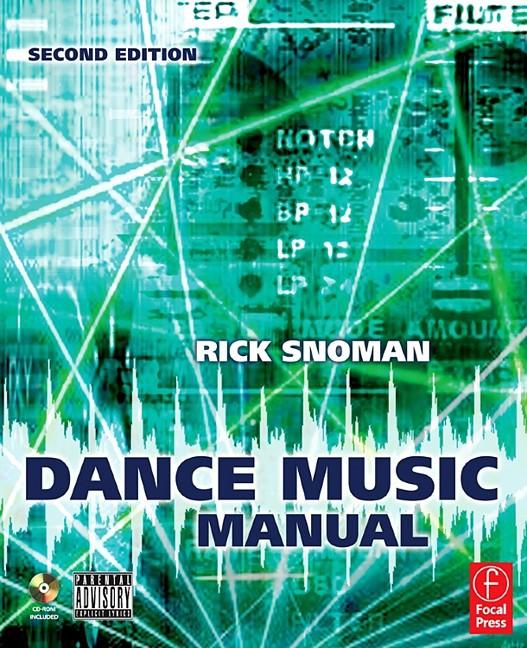Dance Music Manual
Tools, Toys and Techniques
Rick Snoman
Copyright
Copyright 2009, Rick Snoman. Published by Elsevier Ltd. All rights reserved
Rick Snoman. 2009
Brief Table of Contents
Table of Contents
List of Figures
List of Tables
Copyright Page
Linacre House, Jordan Hill, Oxford OX2 8DP, UK
30 Corporate Drive, Suite 400, Burlington, MA 01803, USA
The right of Rick Snoman to be identified as the author of this work has been asserted in accordance with the Copyright, Designs and Patents Act 1988
No part of this publication may be reproduced, stored in a retrieval system or transmitted in any form or by any means electronic, mechanical, photocopying, recording or otherwise without the prior written permission of the publisher
, and selecting Obtaining permission to use Elsevier material
NOTICE
No responsibility is assumed by the publisher for any injury and/or damage to persons or property as a matter of products liability, negligence or otherwise, or from any use or operation of any methods, products, instructions or ideas contained in the material herein
British Library Cataloguing in Publication Data
snoman, Rick
The dance music manual : tools, toys and techniques. 2nd ed.
1. Underground dance music 2. Sound recordings Remixing 3. Electronic composition
I. Title
781.6'41554134
Library of Congress Control Number: 2008935934
ISBN: 978-0-2405-2107-7
For information on all Focal Press publications visit our website at www.focalpress.com
Printed and bound in the USA
09 10 11 12 12 11 10 9 8 7 6 5 4 3 2 1
Dedication
This book is dedicated to my children: Neve and Logan.
Acknowledgements
I would like to personally thank the following for their invaluable help, contributions and/or encouragement in writing this book:
Catharine Steers at Elsevier (for being so patient)
Colin and Janice Lewington
Darren Gash at the SAE Institute of London
Dave Cannockwolf Byrne
DJ Superstar Cristo
Mark Penicud
John Mitchell
Mick Blackstormtrooper Byrne,
Helen and Gabby Byrne
Mike at the Whippin post
Richard James
Steve Marcus
Everyone on the Dance Music Production Forum
All music featured on the CD Phiadra
(R. Snoman & J. Froggatt)
Vocals on Chill Out supplied by Tahlia Lewington
Vocals on Hip Hop supplied by MC Darkstar
Vocals on Trance and Garage supplied by Kate Lesing
Cover Design: Daryl Tebbut
Preface
If a book is worth reading then its worth buying
Welcome to the Dance Music Manual Second Edition. After the release of the first edition way back in May 2004, I received numerous emails with suggestions for a second edition of the book and Ive employed as many of them as possible, as well as updating some of the information to reflect the continually updated technology that is relevant to dance musicians. Id like to personally thank everyone who took the time to contact me with their suggestions.
As with the first edition, the purpose of the Dance Music Manual is to guide you through the technology and techniques behind creating professional dance and club-based music. While there have been numerous publications written on this important subject, the majority have been written by authors who have little or no experience of the scene nor the music, but simply rely on educated guesswork. With this book, I hope to change the many misconceptions that abound and offer a real-world insight into the techniques on how professional dance music is written, produced and marketed.
Ive been actively involved in the dance music scene since the late 1980s and, to date, Ive produced and released numerous white labels and remixes. Ive held seminars across the country on remixing and producing club-based dance music, and authored numerous articles and reviews.
This book is a culmination of the knowledge Ive attained over the years and I believe it is the first publication of its kind to actively discuss the real-world applications behind producing and remixing dance music for the twenty-first century.
The Dance Music Manual has been organized so as to appeal to professionals and novices alike, and to make it easier to digest it has been subdivided into three parts.
The first part discusses the latest technology used in dance music production, from the basics of synthesis and sampling to music theory, effects, compression, microphone techniques and the principles behind the all-important sound design. If youre new to the technology and theory behind much of todays dance music, then this is the place to start.
The second part covers the techniques for producing musical styles including, among others, trance, drum n bass, trip-hop, rap and house. This not only discusses the general programming principles behind drum loops, basses and leads for the genres, but also the programming and effects used to create the sounds. If you already have a good understanding of sampling rates, bits, synthesis programming and music theory, then you can dip into these sections and start practicing dance music straight away.
The third part is concerned with the ideology behind mixing, mastering, remixing, pressing and publication of your latest masterpiece. This includes the theory and practical applications behind mixing and mastering, along with a realistic look at how record companies work and behave; how to copyright your material, press your own records and the costs involved.
At the end of the book youll also find a chapter in which an international DJ has submitted his view on dance music and DJing in general.
Of course, I cannot stress enough that this book will not turn you into a superstar overnight and it would be presumptuous to suggest that it would even guarantee you a successful dance record. Dance music has always evolved from musicians pushing the technology further. Rather, it is my hope that it will give you an insight into how the music is produced and from there its up to you to push in a new direction.
Creativity can never be encapsulated in words, pictures or software and its our individual creative instincts and twists on a theme that produces the dance floor hits of tomorrow.
Experimentation always pays high dividends.
Finally, Id also like to take this opportunity to thank you for buying The Dance Music Manual. By purchasing this book, you are rewarding me for all the time and effort Ive put into producing it and that deserves some gratitude. I hope that, by the end, you feel it was worth your investment.
Musical Works
I would like to remind record companies that they have a cultural responsibility to give the buying public great music. Milking a trend to death is not contributing to culture and is ultimately not profitable.
Dance music has always relied on sampling. From its first incarnation of mixing two records together on a pair of record decks to make a third mashup to the evolution and consequent increased power of the sampler and audio workstation. It would be fair to say that without sampling, dance music would be a very different beast and may not have even existed at all.
For legal reasons I cannot suggest that any artist choosing to read this book dig through their record collections for musical ideas to sample, but now more than ever, it has become a cornerstone of the production of dance-based music. The importance of sampling should not be underestimated and when used creatively, it can open new boundaries and spawn entirely new genres of music. Perhaps the best example of this is the Amen Break.

